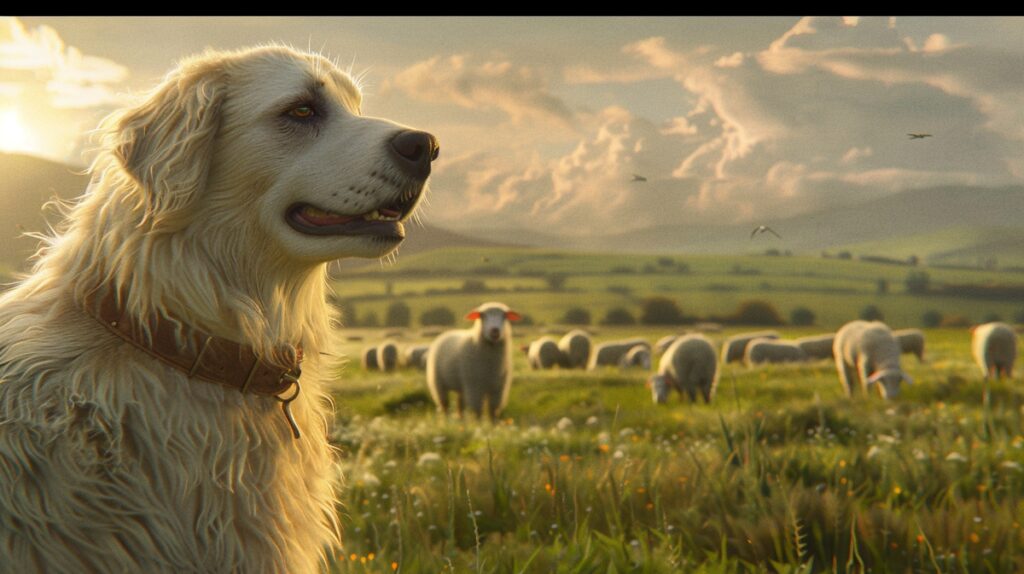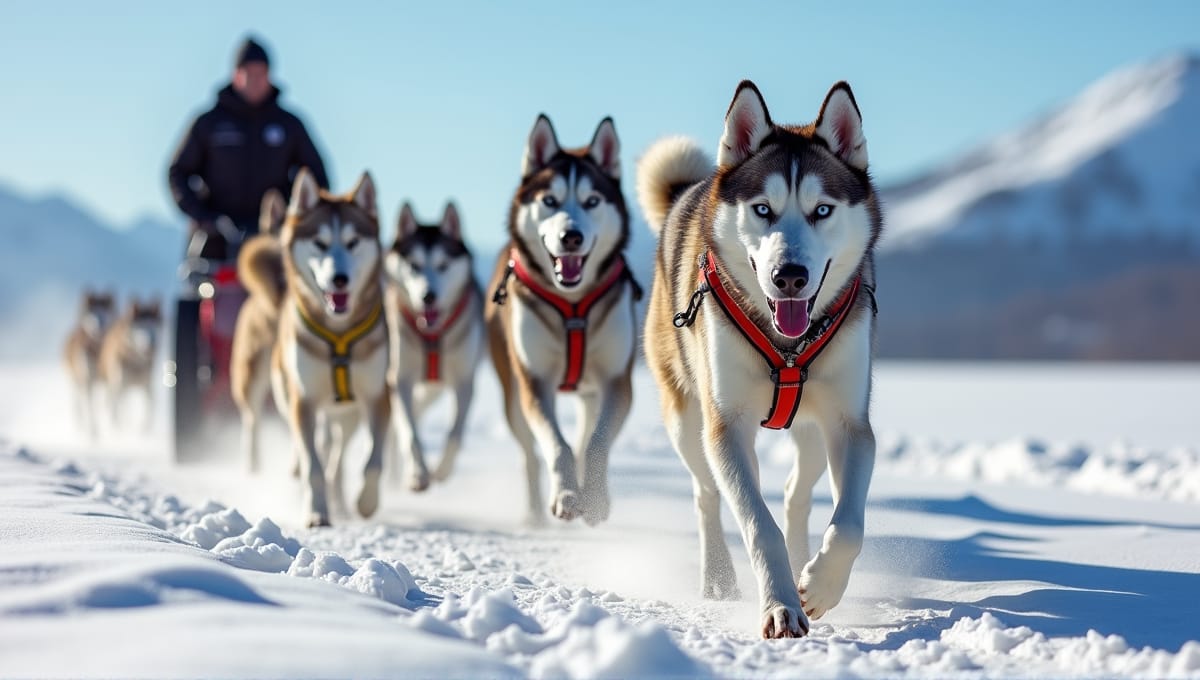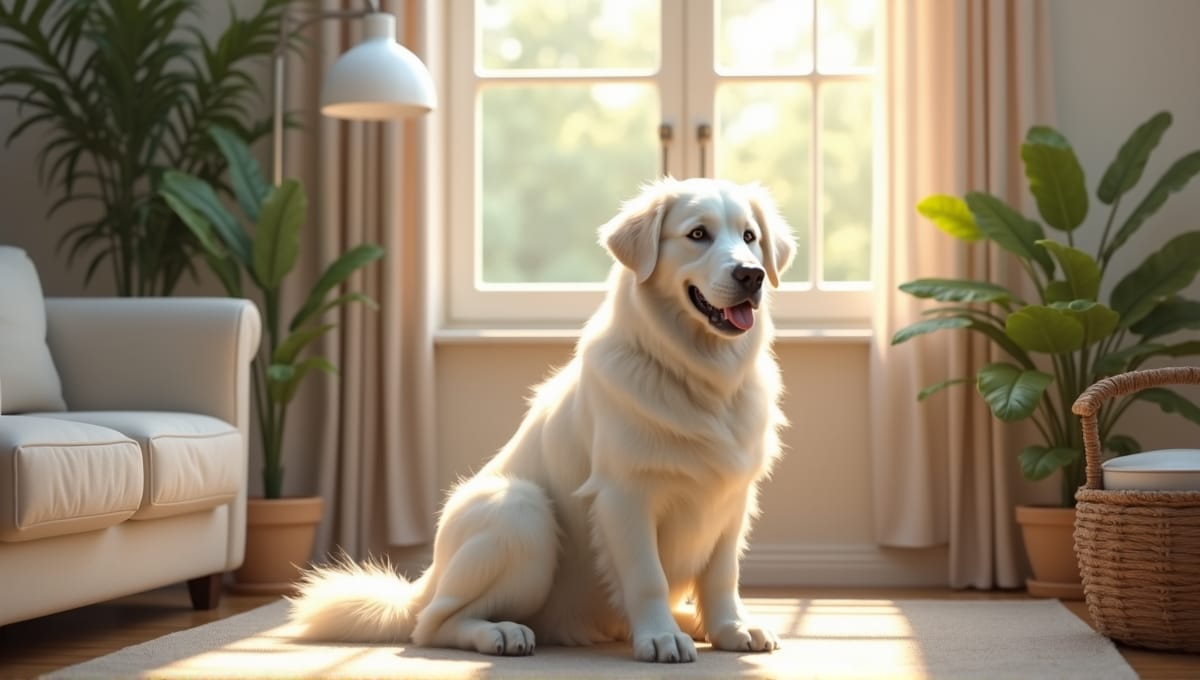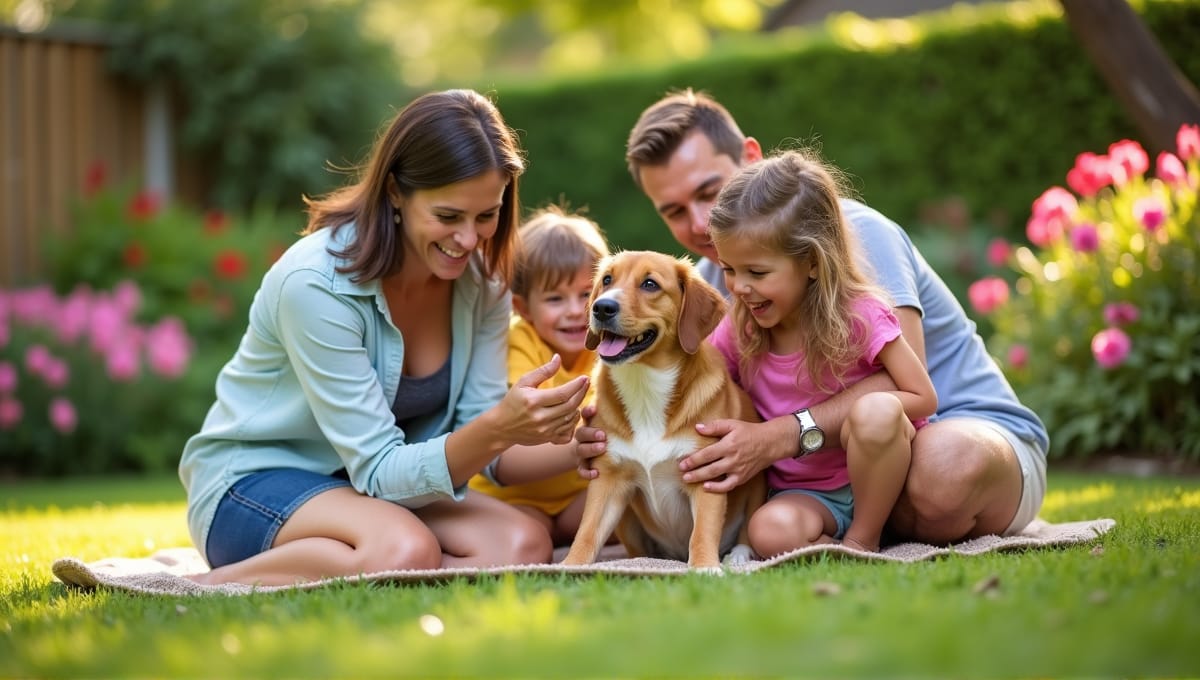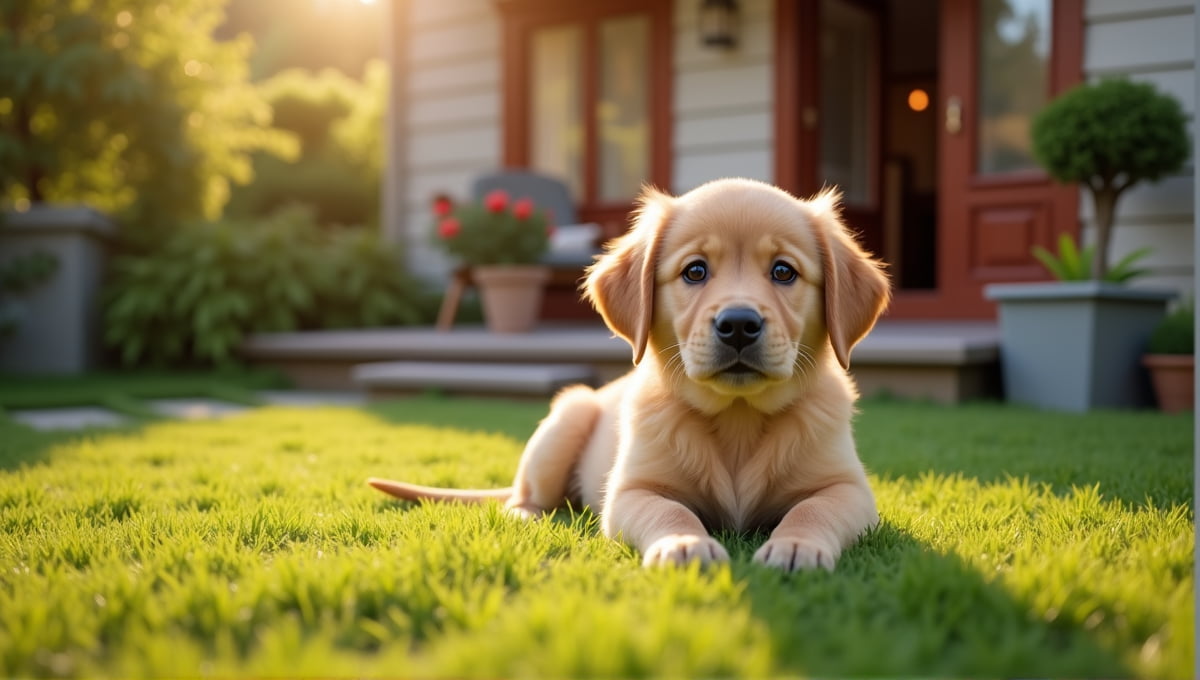Livestock guardian dogs are not your average large, fluffy farm dogs. These strong dogs are specifically bred to protect livestock from predators. I’ve spoken with many farmers who credit their LGDs with keeping wolves, coyotes, and even bears at bay. You’ll also be impressed by how deeply these dogs bond with the animals they protect and their relentless work ethic.
Livestock Guardian Dog Breeds

Livestock guardian dogs (LGDs) are a staple on many farms. These protective dogs have been helping keep livestock safe for thousands of years. I grew up on a farm with working dogs, and they’re truly amazing animals. Let’s discuss some of the most common breeds:
Great Pyrenees
- White, fluffy coat
- Gentle giants
- Very calm around livestock
- Excellent cold weather tolerance
- Anatolian Shepherd
- Maremma Sheepdog
- Komondor
- Kangal Dog
- Akbash Dog
- Kuvasz
- Tibetan Mastiff
These breeds share many similarities. They’re all large, powerful dogs that can thrive in tough conditions. Most LGDs are at least 100 pounds and stand 25-34 inches at the shoulder. This size gives them the strength they need to fend off predators.
You’ll notice that many of these dogs have heavy, weather-resistant coats. This protects them from the elements and potential attacks from predators. Simply put, their size and appearance alone are often enough to keep pests at bay. But they’re also more than capable of protecting their flocks if push comes to shove.
Of course, each breed has its own unique set of characteristics. For example, Great Pyrenees are known to be calm around livestock. Anatolian Shepherds are lauded for their intelligence and independence. Komondors have those signature corded coats that help them blend in with their surroundings and stay safe.
When you’re selecting an breed, think about your specific situation. You should think about the climate, the terrain, and the type of livestock you’re trying to protect. Some are better in cold climates while others can thrive in the heat. And certain LGDs are best suited to protect specific animals, such as sheep or cattle.
Characteristics and Behaviors
LGDs have a specific set of characteristics that make them excellent livestock guardians. These are not your average house pets. They’re working dogs with natural instincts that have developed over generations.
Protectiveness is the fundamental characteristic of an LGD. These instincts to guard are inherent to these dogs, and they will protect the livestock at all costs.
Independence is another key trait of LGDs. They don’t require constant direction from humans. In fact, they’ll often work independently for days or even weeks with very little human intervention.
They have little to no prey drive as they don’t chase or hunt the animals they protect. Instead, they form strong bonds with the livestock and regard them as their own pack.
Territoriality is another essential characteristic. The dogs spend most of their time patrolling their territory in search of potential threats. They’re also skilled at sensing danger from a considerable distance away.
They are always on alert and vigilant, and even when they rest, they do so with one eye open. They use an incredibly intimidating presence, combined with barking and physical threats, to deter predators.
From a physical perspective, these dogs are:
- Large and powerful
- Have thick, double coats that are weather resistant
- Have strong jaws and teeth
- Have excellent senses (especially hearing and smell)
It’s interesting to reflect on the fact that humans have used these dogs for so long. Archaeological data suggests that LGDs date back to 3685 BC in what is now modern-day Turkey, Iraq, and Syria. That’s over 5,000 years of partnership between humans, dogs, and livestock!
Training Livestock Dogs
Training an Livestock Guardian Dogs is unlike training a typical dog. These dogs have a lot of natural instincts, so the training is mostly teaching them how to harness those instincts to be an effective guardian. It’s a process I’ve gone through a few times, and while it’s a challenging training experience, it’s also very rewarding.
Early socialization with the livestock is critical because you want the dog to view the livestock as its family. Therefore, introduce a puppy to the livestock under supervision to ensure it can bond with them from a young age.
Basic obedience commands are also essential, which means you need to be able to make the LGD do things like “come,” “stay,” and “leave it” when necessary.
Establishing where the dog should go and what it should protect is also important, which should be done by setting boundaries for the dog with natural landmarks or a property fence.
When correcting unwanted behaviors, be sure to be firm yet gentle because these are very sensitive dogs. Using overly harsh punishment tactics can result in a dog that doesn’t trust you.
Positive reinforcement is something LGDs respond very well to, so telling the dog “good job” for doing something correctly can often be just as effective as giving a treat. This can be anything the dog feels is rewarding, such as extra time with you, a pat, or a treat.
Incorporate the guarding tasks slowly, as it’s helpful to start with you accompanying the dog and then slowly give it more and more responsibilities. You also need to be patient because training an dog to be a reliable guardian takes time.
Finally, remember training is an ongoing process, so although the dog will learn most of what it needs to know in the first few years of its life, you often need to reinforce this training even with adult dogs. There are still even old dogs I need to go work with occasionally to reinforce some specific part of the training.
Timeline For Training Development
Understanding this timeline makes it a lot easier to be patient and staying committed to the training process. Consider the average LGD training time.
It takes about two years for an dog to be truly reliable in the field, meaning if you trust it’s going to protect your specific set of livestock without your supervision. And that time itself is really two to three years, as depending when the dog was born and when you receive it, it may need a full year to mature before you can really even start giving it responsibilities. And (particularly when dealing with breeds who are not considered as great guardians) it’s often a solid three to four years before a dog will be trustworthy in the field unsupervised.
This is a long training process, and any shortcuts made during it are likely to result in a dog that is unreliable (or even loses its life). So you have to be committed to seeing the training process through to the very end. But the reward for doing so is that you have a dog that is effectively a bodyguard for your livestock for a decade.
Proper Care and Maintenance of Livestock Dogs
Caring for an LGD is a bit different than caring for a typical pet dog, as these dogs are working animals and have specific needs to ensure their health and effectiveness.
Nutrition is one of the most important needs of any dog You must provide them with a high-quality diet rich in protein to sustain their body size and energy levels. The amount of food they require will depend on the dog’s activity level and your climate.
Grooming requirements vary by breed. For example, long-haired breeds like Great Pyrenees need regular brushing to avoid matting, while short-haired breeds need less grooming but still benefit from occasional brushing.
They are susceptible to specific health problems, particularly joint issues due to their large size. To prevent this, ensure they receive regular exercise and don’t become obese, as excess weight places stress on their joints. Additionally, ensure they remain physically fit to avoid joint issues common to most large breeds.
Another key consideration is providing mental stimulation. While LGDs are independent animals, they still require some form of interaction and mental stimulation. Provide toys or tasks to challenge and engage them mentally.
LGDs must have the correct shelter. Since LGDs spend most of their time outside, they require protection from the weather. They need a solid dog house or access to a barn or similar structure.
Like any dog, they should see the veterinarian annually to diagnose any health issues early on. Annual exams are an essential part of the care routine of any dog, as are proper vaccinations.
Controlling parasites is another necessity, particularly if the dog lives with livestock or other farm animals. Preventative medicine includes regular deworming and flea/tick prevention.
Finally, always remember that LGDs are not simply working dogs; they are part of your farm. Caring for them correctly ensures they can fulfill their function as guardians and live long, happy lives.
Integrating Livestock Guardian Dogs with Livestock
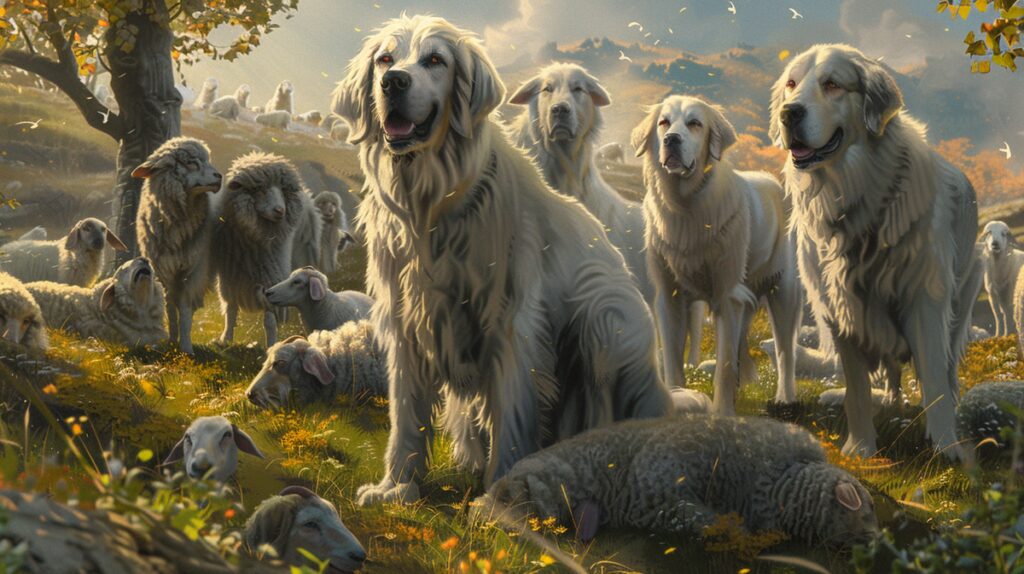
Introducing dogs to your livestock is a careful process and it definitely requires patience. The key is to build a strong bond between the dog and the animals it will protect.
Start by introducing young LGDs to small numbers of livestock. Watch these interactions closely. You want the dog to be interested but not too playful or rough.
Establishing this trust takes time. The livestock should be comfortable with the dog and not fearful, and the dog should view the livestock as its charges rather than potential playmates or prey.
Watch the initial interactions closely. If you see any unwanted behavior from the dog, correct it immediately. Also praise the dog when it shows calm, gentle behavior to reinforce this positive action.
As the dog matures, you can gradually increase its responsibilities, allowing it to spend supervised time alone with livestock for short stretches.
It is important to maintain proper numbers:
- Sheep: 1 dog for 200-250 sheep
- Cattle: 1 dog for 50-100 cattle
- Goats: 1 dog for 100-150 goats
- Poultry: 1 dog for 500-1000 birds
You may also adjust these numbers based on things like the dog breed, the terrain of your property, the amount of predator pressure, etc. For example, for sheep, the suggested number is about 5 dogs for a group of 350 sheep, though this can vary based on terrain, herd size, and local predator pressure.
Dogs may also need slightly adjusted training and management for different livestock types. For instance, poultry guardian dogs need very low prey drives and should be exceptionally gentle.
Just remember that this is a process. Continually watch and adjust your LGDs company with livestock as needed.
Effectiveness Against Predators
LGDs are very effective at keeping predators away from livestock. I’ve personally seen them drastically reduce losses on a farm.
The dogs deter a broad range of predators including:
- Wolves
- Coyotes
- Bears
- Mountain lions
- Foxes
- Feral dogs
LGDs protect livestock in a number of ways. They establish territories, mark with scent, and use their mere presence to discourage predators from entering their territory. If a predator does enter their territory, they’ll bark a loud warning or, in rare cases, confront the predator directly.
They have very high success rates at preventing predation. One U.S. program reported that farms that previously lost up to 200 sheep per year to wolves experienced zero losses after introducing guardian dogs. Numerous studies have shown LGDs are very effective at preventing livestock losses.
The effectiveness depends on the breed of dog, type of terrain, type of predators, and quantity of land to be protected. Multiple dogs working together are also more effective than a single dog.
While they are incredibly effective, they’re not the only solution. Farmers often use dogs in combination with other predator protection methods like fencing or night penning for a comprehensive approach.
LGDs aren’t perfect, however. They struggle with especially large predators or exceptionally rugged terrain. They’re also less effective against aerial predators like eagles.
Even with these few limitations, they are still one of the most effective and environmentally sustainable methods for protecting livestock from predators.
Challenges of Owning
LGDs are excellent tools, but they present some challenges. Be prepared for the following challenges before you introduce an dog to your farm.
Significant training time investment: During the first two years, you’ll spend a lot of time training.
Potential conflict with neighbors or visitors: LGDs are cautious, so they will bark when people come to your property.
Barking management: Barking is a tricky behavior to manage in LGDs. While barking is natural, you don’t want excessive barking. Training and management strategies can help you avoid this.
Cost of care and feeding: You must feed large dogs, and they also require regular veterinary care.
Liability of owning a large dog: Make sure you have insurance that covers the dog, and take measures to prevent any incidents.
Adaptability to different seasons and weather: They work all year, so you need to make sure they have appropriate care in the summer and winter.
While these challenges seem daunting, most farmers agree that the pros of owning an LGD far exceed the cons. By managing and training your dog well, you can have a great farm partner.
Cost Considerations for Livestock Guardian Dogs
When thinking about an Livestock Guardian Dogs, you should understand that these dogs are a financial investment in your farm’s security.
The initial cost of purchasing an LGD puppy can vary from $500 to $2,500 depending on the breed and breeder. Trained adults may fetch an even higher price.
Ongoing food and supply costs are expensive, as these are large dogs that eat a hefty amount of food, typically 4-6 cups of high-quality dog food daily.
Vet expenses include regular check-ups, vaccinations, and potential emergency care. LGDs are often at greater health risk, especially if they’re working in rugged conditions.
Training can also add up, particularly if you require professional assistance. Some farmers attend workshops and a few even hire professional trainers.
While these costs may seem like a lot, the money saved from reducing livestock predation is significant:
- Fewer livestock lost to predators
- Less stress on your livestock (which means they’ll be healthier and more productive)
- Less need for other predator control methods
- The ability to graze in certain pastures you avoided before due to predators
In the long run, the financial benefits of LGDs make them a smart decision for most livestock operations. Many find their dogs paid for itself within a few years by reducing predation and increasing livestock productivity.
Legal Requirements and Considerations
Livestock Guardian Dogs come with legal responsibilities. You’ll need to learn about any laws and regulations and ensure you comply with them.
Regulations vary depending on your location. Some places have specific regulations for working dogs while others don’t differentiate between working and pet dogs. Contact your local authorities to find out if any regulations apply to your location.
Liability insurance is recommended. LGDs are generally not aggressive toward people, but accidents can happen. To protect yourself, consider purchasing liability insurance.
There might be fencing and containment restrictions. Although LGDs are supposed to roam with livestock, you might be required to prevent them from leaving your property.
Check noise ordinances in your area. This is related to dogs barking. Some areas make exceptions for working dogs on farms, but check anyway.
You may need to register and license your LGD. This process is typically the same as for any other dog. Make sure you keep your records up to date.
- By ensuring you comply with these legal regulations, you can guarantee that you, your dogs and your farm have a positive relationship with your community.
Best Practices for Selecting and Placing
Selecting the right Livestock Guardian Dogs and properly placing it on your farm are key to your success. Here are the best practices I’ve discovered over the years.
First, assess your needs. What is your climate like? What’s the terrain like? What type of livestock do you have? And what are the potential predator threats? This will help guide your selection of a breed.
Next, select a breed that will excel in your specific situation. For example, Maremma dogs are excellent with sheep if you have a hilly location, while Kangals are excellent if you have large predator threats.
Evaluate the temperaments of the individual dogs. Even within a specific breed, different dogs have different personalities. Look for puppies that are calm and seem to take interest in the livestock.
Consider the age and experience of the dog. Puppies take more work to train, but you can teach them from the ground up to bond them with your livestock correctly. Adult dogs may have previous experience, which can be invaluable. However, it may also take longer to integrate them into your farm properly.
Placement on your property is extremely important. Introduce the dog to the location where it will be working gradually. It can be a shock for a dog to be tranferred from one farm to another if it’s not done correctly. It can easily get lost or be ineffective if not done properly. Ensure it has good shelter, water, and vantage points to watch the livestock from when placing it on your farm.
The terrain type and the livestock type will also affect your approach. Some dogs guarding something like cattle may cover many miles in a day, so they need a totally different approach to training them than a dog that will be hanging out in the woods with the sheep.
closing out
Livestock guardian dogs are amazing protectors. I’ve personally witnessed the difference these loyal dogs can make in a farm’s security. Just be sure to train and care for them correctly, and you’ll have a loyal protector for your animals for years. It’s a significant investment of time and effort, but it’s worth it. There’s really nothing like looking out at your land and seeing these majestic dogs keeping the predators away.


